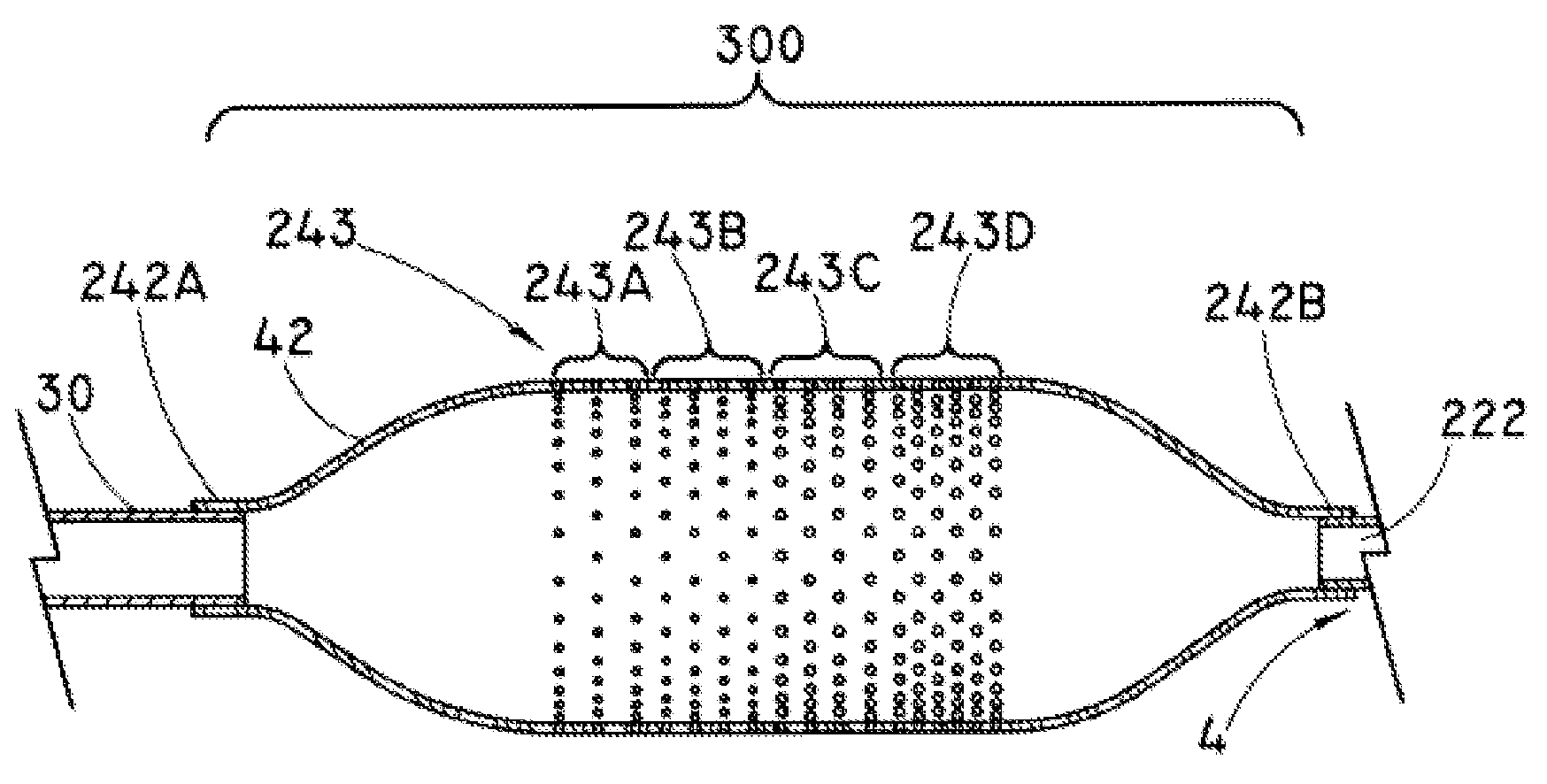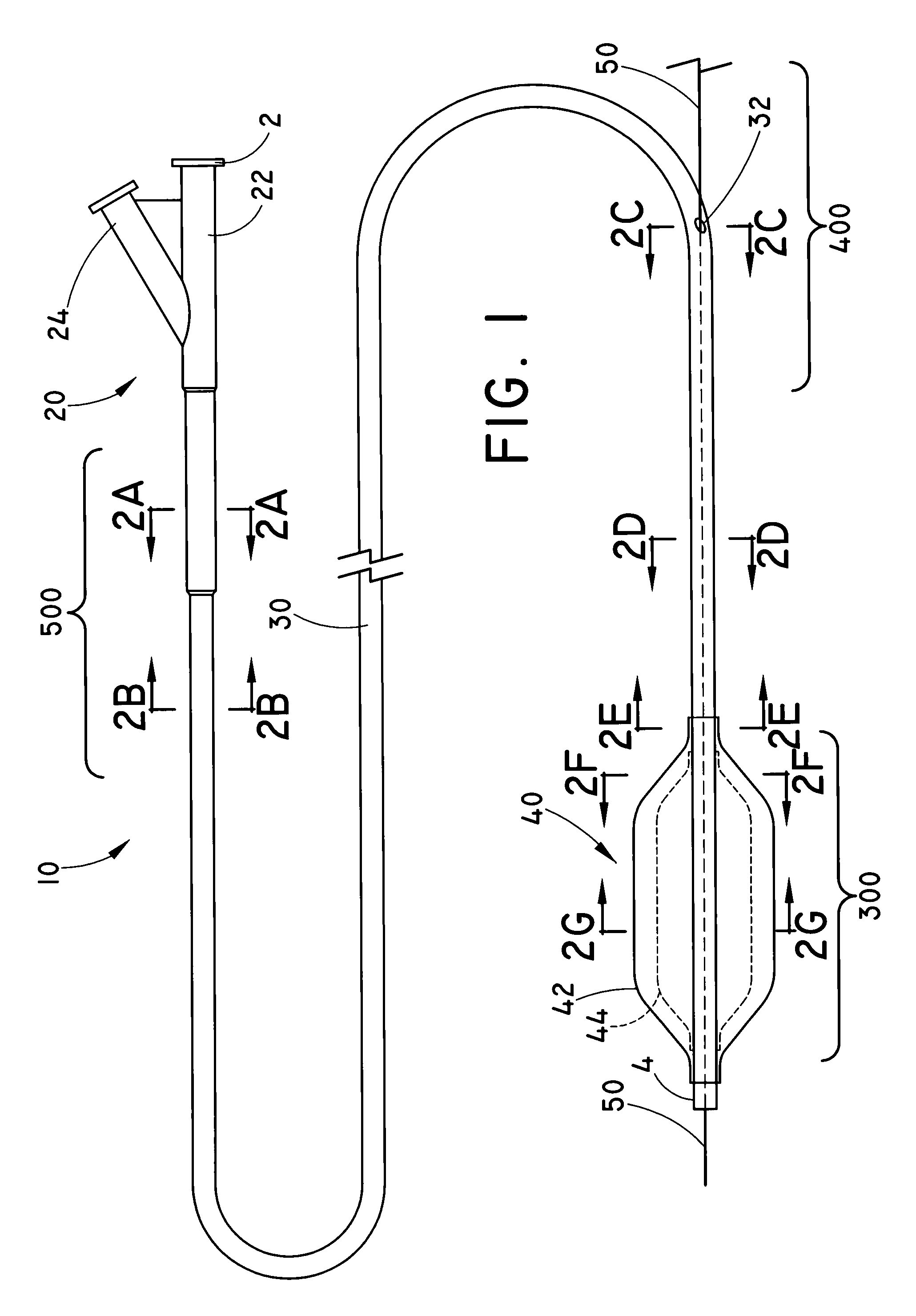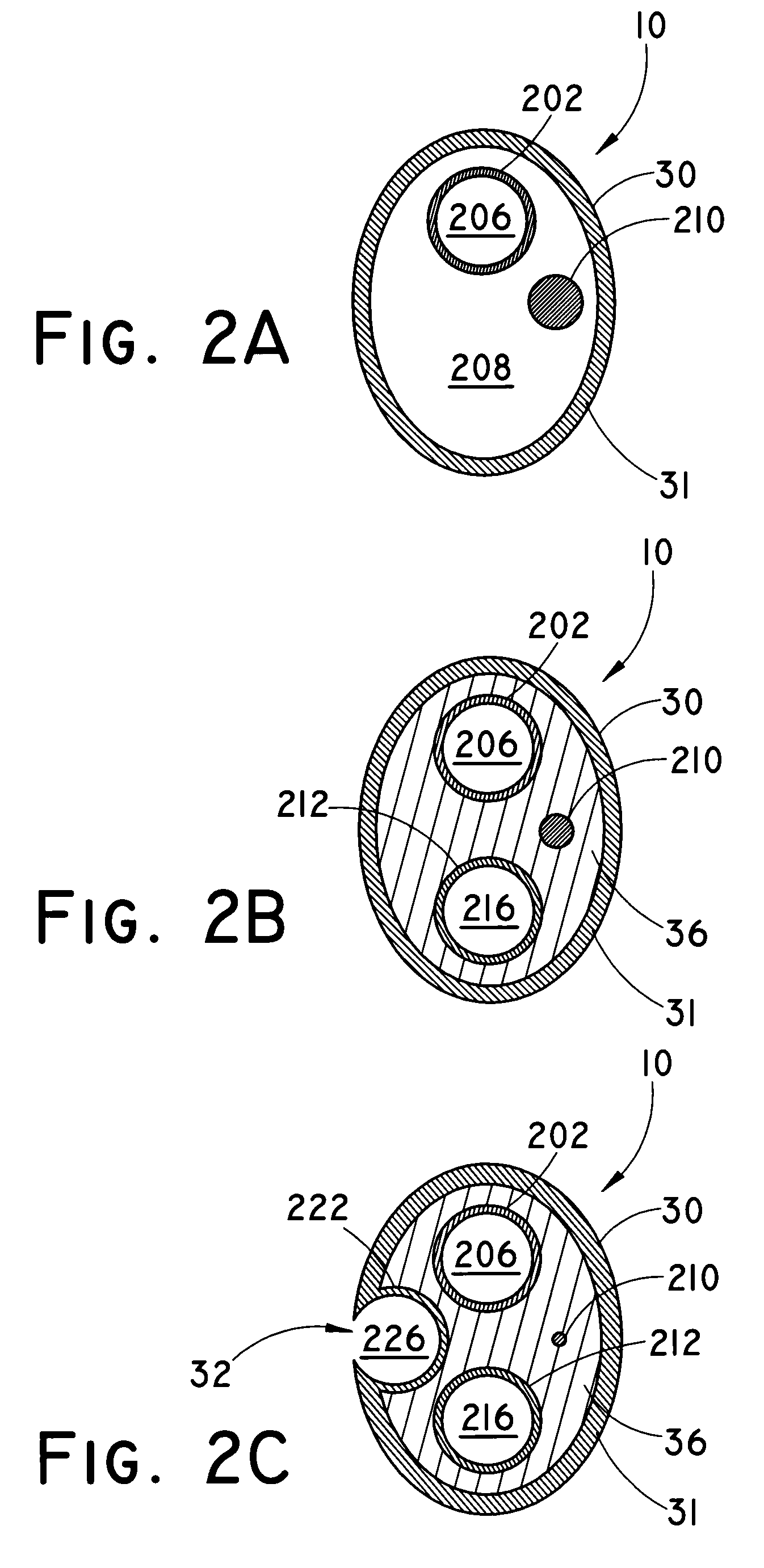Balloon catheter for delivering a therapeutic agent
a balloon catheter and therapeutic agent technology, applied in the field of medical catheters, can solve the problems of tissue damage, constrictions or blockages that may reoccur in many cases, and affect the area not needing treatment, so as to reduce the volume of the annular balloon fluid delivery lumen, improve the pushability of the catheter assembly, and reduce the injection pressure
- Summary
- Abstract
- Description
- Claims
- Application Information
AI Technical Summary
Benefits of technology
Problems solved by technology
Method used
Image
Examples
example 1
Manufacturing a Balloon Catheter Therapeutic Agent Delivery Assembly
An exemplary method of making the balloon catheter assembly 10 is described with reference to FIGS. 6A-6E. Those of skill will appreciate that this and other embodiments may be constructed using alternative methods within the scope of the present invention. FIG. 6A is a first exploded view of the catheter assembly 10. A coextruded PEBA thermoplastic sleeve 634 can have a “figure-8” transverse cross section defining a pair of parallel longitudinal lumens with a wall of about 0.64 mm (0.0025-inches) between the lumens. A first poly(tetrafluoroethylene) (PTFE) tubular member 602 can be placed 661 within the first lumen of the thermoplastic sleeve 634. A second PTFE tubular member 612 can be separately placed 662 within the second lumen of the thermoplastic sleeve 634. A third PTFE tubular member 626 can be placed 663 outside of the thermoplastic sleeve 634, adjacent to and substantially parallel with the thermoplastic ...
example 2
Catheter Shaft Burst Pressure Measurements
Catheter shaft burst pressure was measured. One end of the shaft to be measured was closed off and the interior of the shaft was pressurized with a measurable source, until a discontinuity or fault (such as a hole) developed in the shaft. The pressure was measured in atmospheres (atm) using a burst tester such as a PT-3070 Burst Tester (Laguna Niguel, Calif.). Each component was pressurized in 1 atm (0.1 MPa) increments using a pressurization rate of 0.40 ml / s starting at 1 atm (0.1 MPa) and held at each pressure for three seconds. A failure was defined as a drop in pressure of 1.50 atm (0.15 MPa) or greater during the three second hold. Four separate burst pressures were measured for each of three component portions of the catheters: a perfluorocarbon liner (202, 212, 222), a thermoformable “figure 8”-shaped tubing having an inner diameter of 0.0215-inches (0.546 mm) with a wall of 0.0025-inches (0.064 mm) (36), and a PEBAX heat-shrink oute...
PUM
| Property | Measurement | Unit |
|---|---|---|
| Pressure | aaaaa | aaaaa |
| Pressure | aaaaa | aaaaa |
| Pressure | aaaaa | aaaaa |
Abstract
Description
Claims
Application Information
 Login to View More
Login to View More - R&D
- Intellectual Property
- Life Sciences
- Materials
- Tech Scout
- Unparalleled Data Quality
- Higher Quality Content
- 60% Fewer Hallucinations
Browse by: Latest US Patents, China's latest patents, Technical Efficacy Thesaurus, Application Domain, Technology Topic, Popular Technical Reports.
© 2025 PatSnap. All rights reserved.Legal|Privacy policy|Modern Slavery Act Transparency Statement|Sitemap|About US| Contact US: help@patsnap.com



